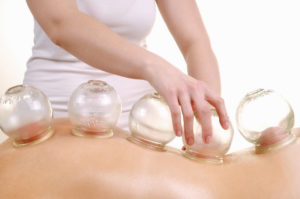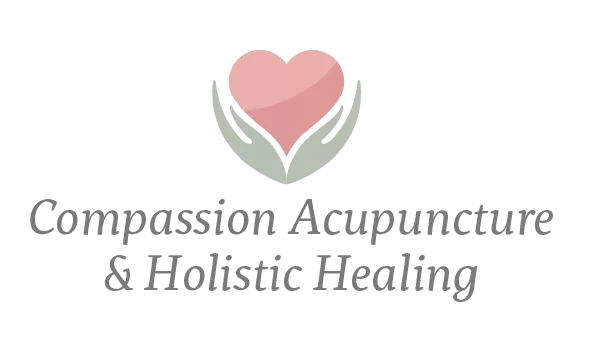
The Art and Science of Cupping
By now you’ve probably heard of or experienced cupping. Olympian swimmer Michael Phelps sporting nothing but a speedo and purple cupping circles while winning gold in 2016 drew a storm of media attention to this ancient healing practice. Hollywood movies (ie: The Godfather, part 2) have cupping scenes, while celebrities have exposed their cupping marks on the red carpet. If you have relatives from other parts of the world, perhaps you got to experience the benefits in childhood. Or maybe your first encounter with cupping was (or will be!) on your acupuncturist’s treatment table.
Cupping therapy has managed to stay on trend for some years now, but it’s long since proven its staying power. Cupping therapy spread throughout Europe during the Renaissance. It dates back much further though, to ancient Egyptian, Greek, Asian, and Middle Eastern cultures. One of the oldest medical textbooks in the world, the Ebers Papyrus, describes how the ancient Egyptians used cupping therapy in 1,550 B.C. [1]
China is famous for cupping and its use there also dates back thousands of years. The earliest record of cupping in China was from the Han Dynasty (206 BC- 220 AD). [2] Back then, cupping was applied using cattle horns or cross sections of bamboo. Now, Chinese Medicine Practitioners generally use round glass or plastic cups.
A 2018 review of studies noted that cupping therapy has reported benefits for a variety of conditions that can be categorized as either localized or systematic diseases.
Cupping is thought to alleviate symptoms by promoting peripheral (close to the skin) blood circulation and improving immunity.
According to the 2018 review, the effects of cupping therapy include:
- promoting the skin’s blood flow
- changing the skin’s biomechanical properties
- increasing pain thresholds
- improving local anaerobic (without oxygen) metabolism
- reducing inflammation
- boosting cellular immunity
According to a 2017 study, the mechanical effect of cupping increases local blood flow and stretches underlying tissue.
Activation of Heme oxygenase-1, a gene that plays a critical role in the prevention of vascular inflammation, could account for many of cupping therapy’s claimed local and systemic health benefits.
There are four main categories of cupping performed today:
- Dry cupping: a suction-only method
- Running cupping: involves moving suctioned cups around the body after applying oil to massage the desired area
- Flash cupping: involves quick, repeated suction and release of cups on an area of the body
- Wet/bleeding cupping: may involve both suction and controlled medicinal bleeding
Traditionally, all cupping involved a flammable substance set on fire and placed in a cup. As the fire goes out, the cup is turned upside down on your skin, creating a vacuum. Wet cupping involves bloodletting enhanced by the suction of the cups. This is thought to draw out thick, stagnant blood, generating healing through improved blood flow. Dry cupping is the most commonly used method in most modern clinics today and is any type of cupping that doesn’t involve a puncture to draw blood. During stationary cupping, the cup is generally left in place for up to 3 minutes. Moving (aka sliding) cupping is where the skin is lubricated with oil to allow for massage-like strokes with the cups as they create a gliding suction over areas of the body such as the back muscles. A convenient cupping tool used by many acupuncturists today uses a pump instead of fire to create a vacuum. This style allows for the use of smaller cups to work with bony joints and even face muscles. Some therapists also use silicone cups, which are easily maneuvered with a squeeze of the hand to create the desired level of suction.
Biomedical research has found that cupping does, in fact, increase local blood flow through microcirculation and capillary cell repair [3], and wet cupping has been shown to help remove toxins from the blood. [4]
One of the reasons it has stood the test of time is because it is safe and beneficial for so many conditions. Here are some examples of uses where research supports effectiveness[5] [6] :
Cupping therapy may help with the following conditions, among others:
- lower back pain
- neck and shoulder pain
- headache and migraine
- knee pain
- immune support
- facial paralysis
- cough and dyspnea
- acne
- lumbar disc herniation
- cervical spondylosis
- brachialgia
- carpal tunnel syndrome
- hypertension
- rheumatoid arthritis
- asthma
- And MANY MORE
So, the big question is: How does it feel?
Like a massage! (especially the sliding cups) but instead of a push, you feel a pull. Patients sometimes describe it as ‘a good hurt’, followed by a release of pressure. A good practitioner will communicate with you to find your balance point to make sure it is a relaxing, comfortable experience. And yes, you may leave with the famous ‘cupping marks’, but these are not bruises, as they are not caused by injury and do not hurt, rather they are evidence that stagnation has been released.
While it is generally considered a very safe technique, it is important to make sure your practitioner is skilled and taking proper precautions. Licensed Acupuncturists have extensive training in cupping, so call today and experience the benefits yourself! There aren’t many side effects associated with cupping. The side effects you may experience typically occur during your treatment or immediately after, such as circular marks or discoloration where the cups have been that usually go away within 2-7 days of the session.
Please call us at 954-594-0843 to find out if the cupping is the right therapy for you!
[1] https://melbournenaturaltherapies.com.au/the-history-of-cupping/ [2] https://kootenaycolumbiacollege.com/the-history-of-chinese-medicine-cupping/ [3] https://www.ncbi.nlm.nih.gov/pmc/articles/PMC4488563/ [4] https://pubmed.ncbi.nlm.nih.gov/25453524/ [5] https://www.webmd.com/balance/guide/cupping-therapy [6] https://www.ncbi.nlm.nih.gov/pmc/articles/PMC4488563/

